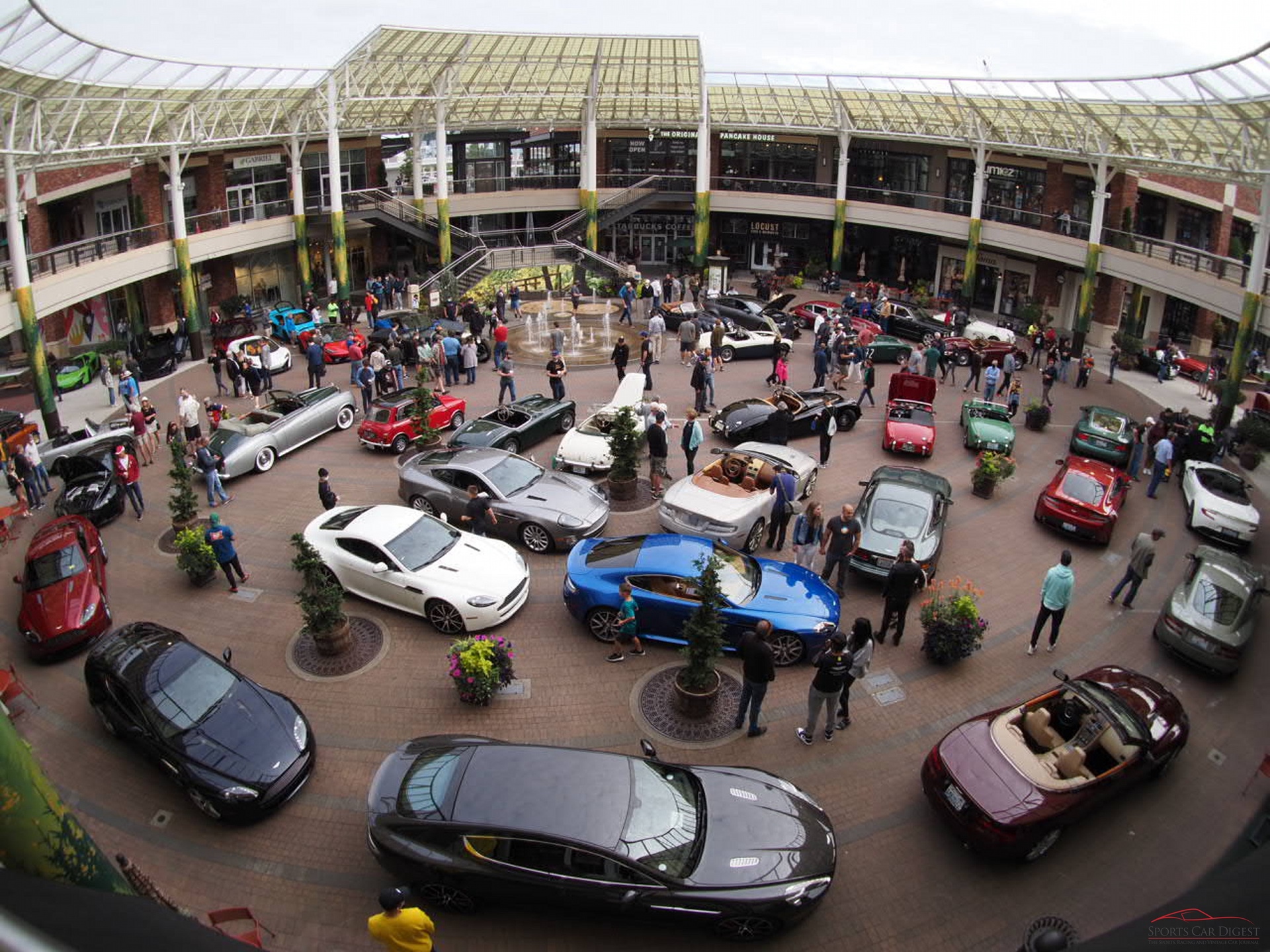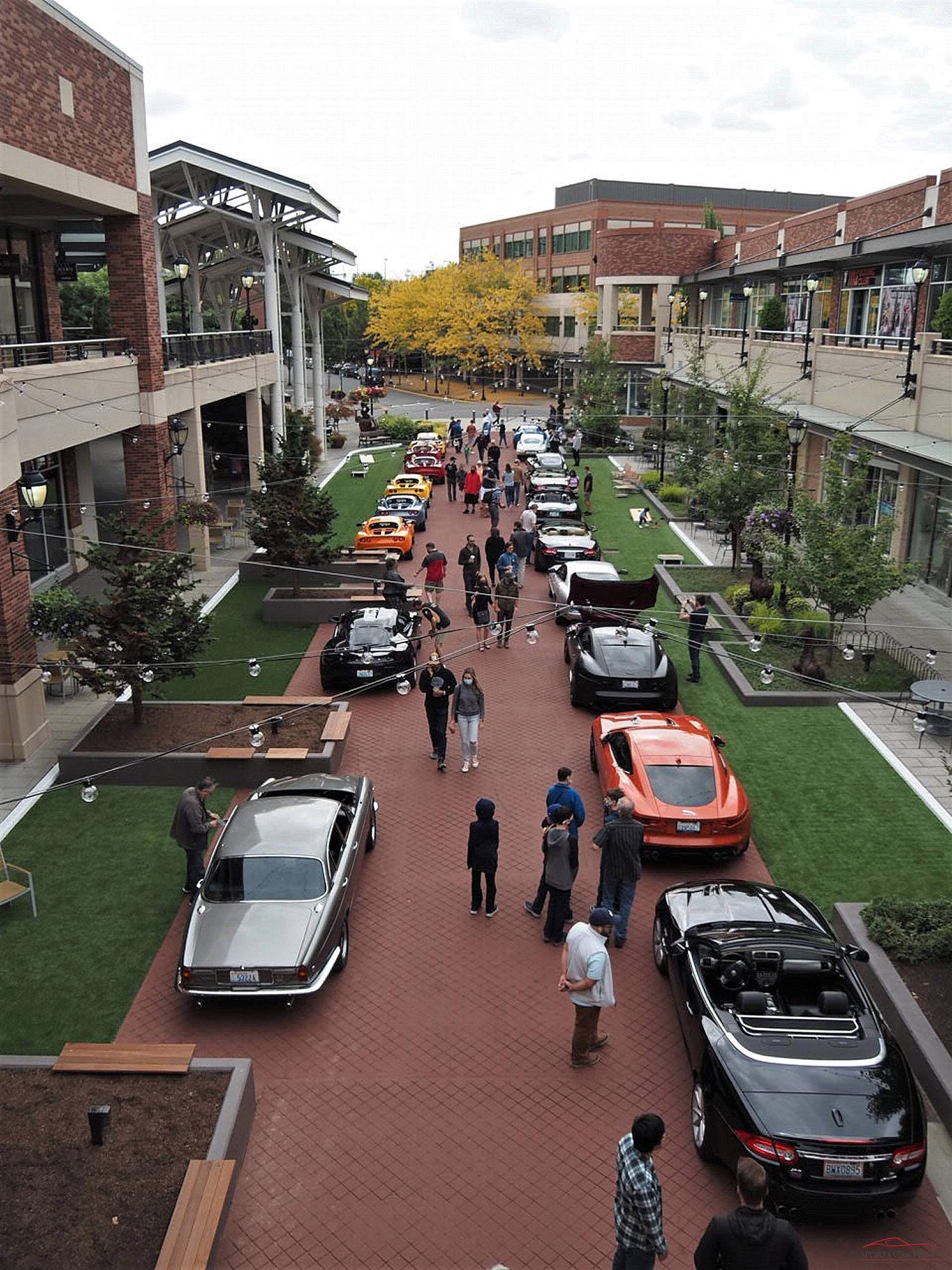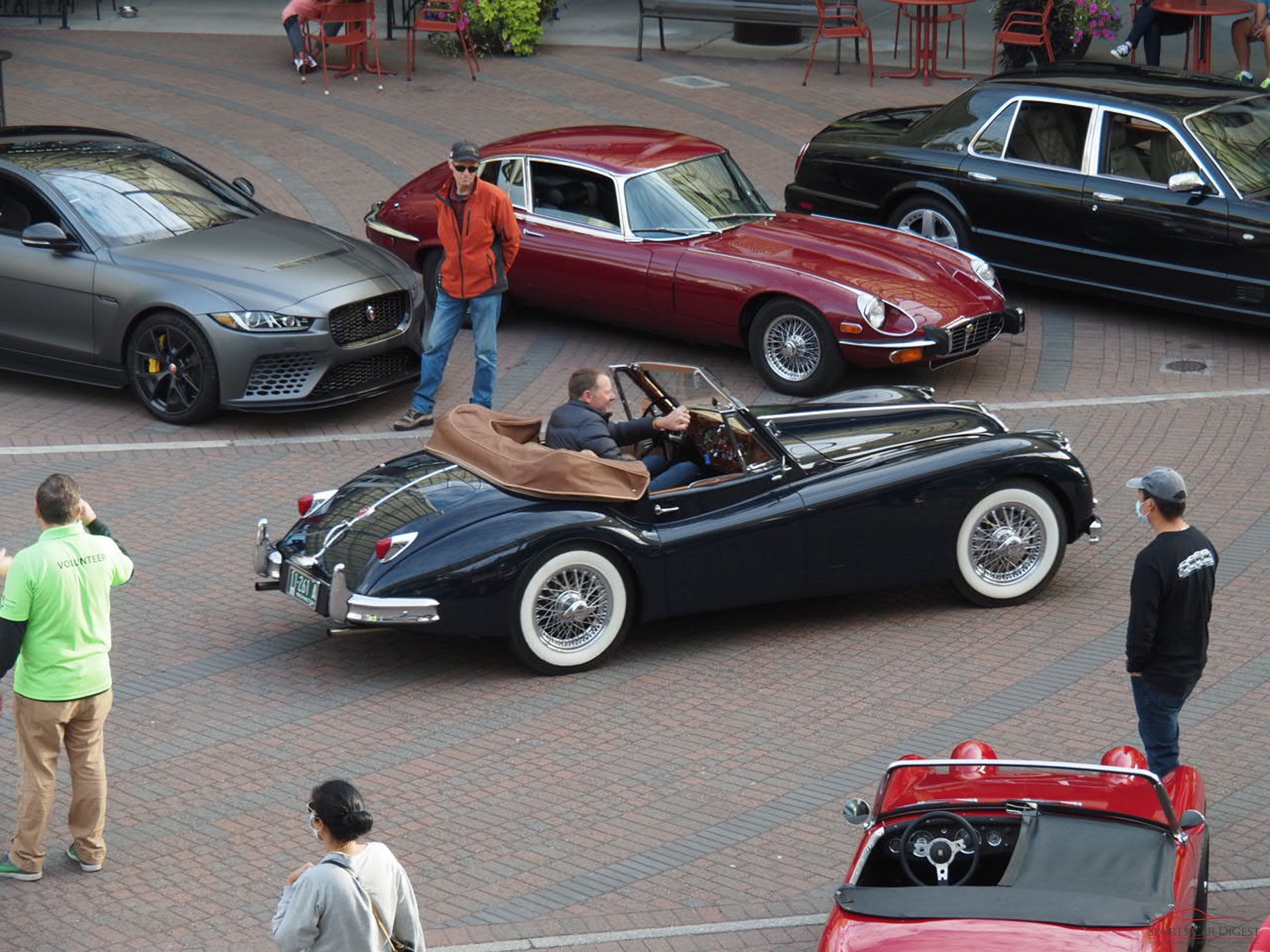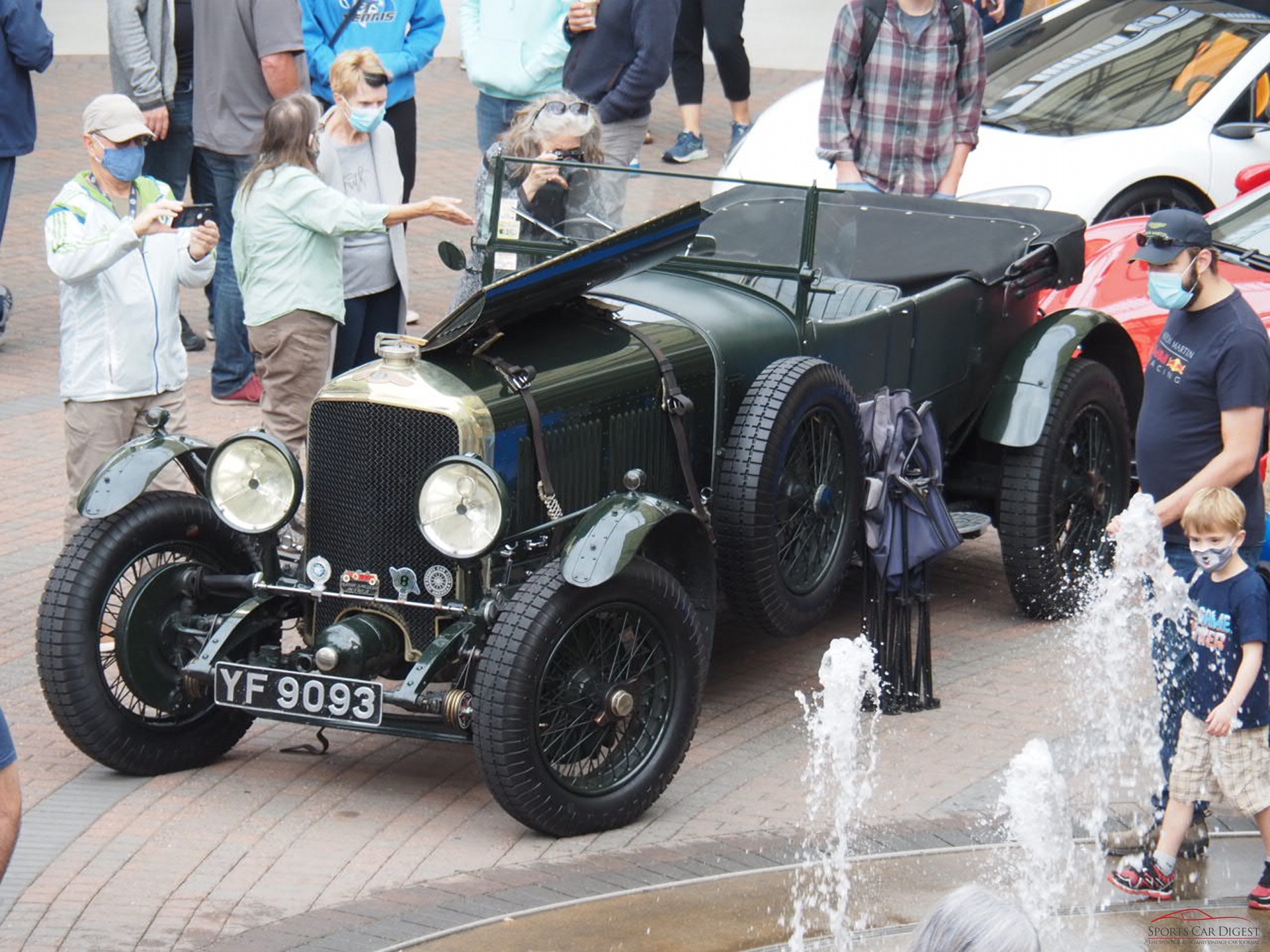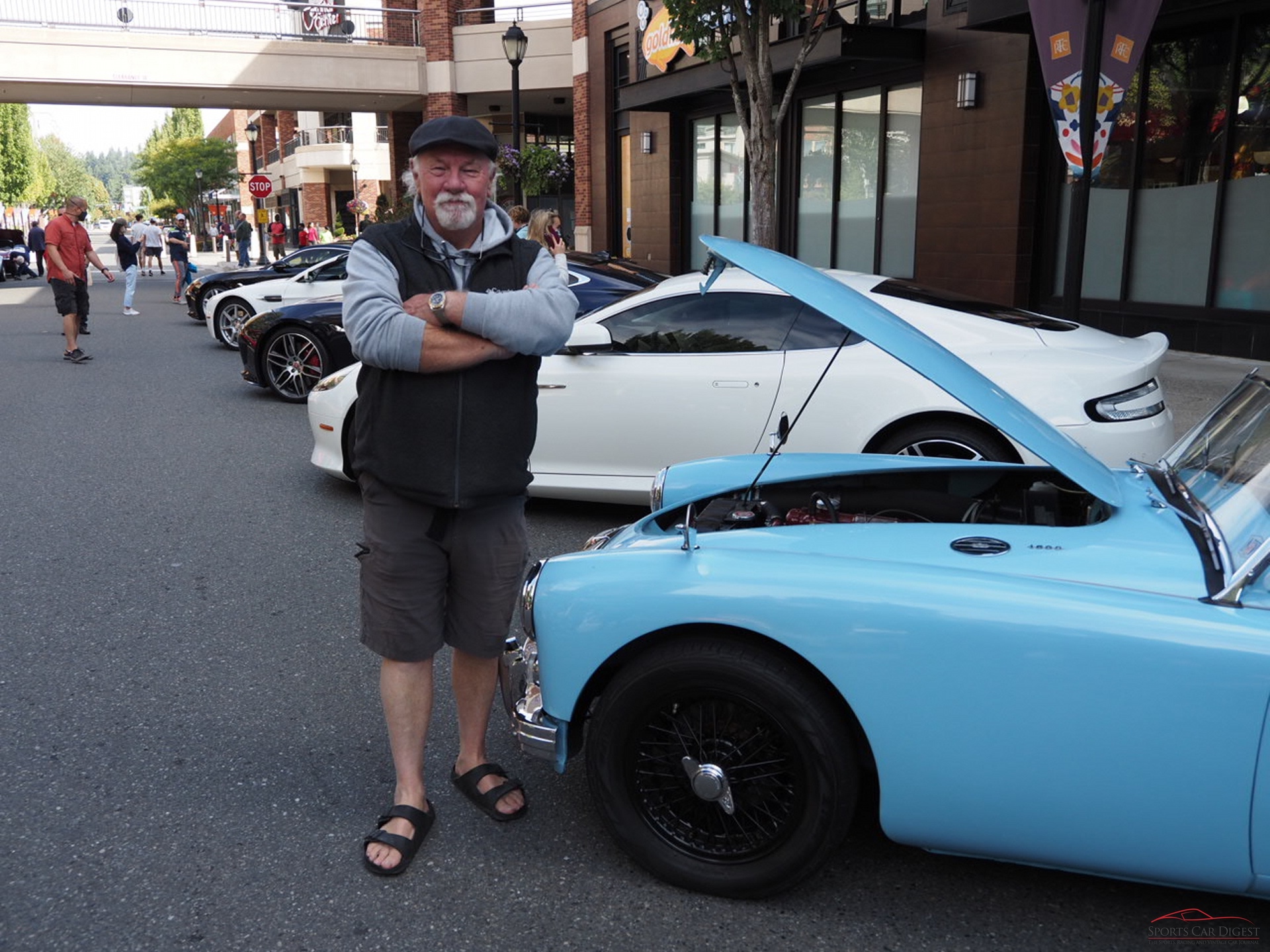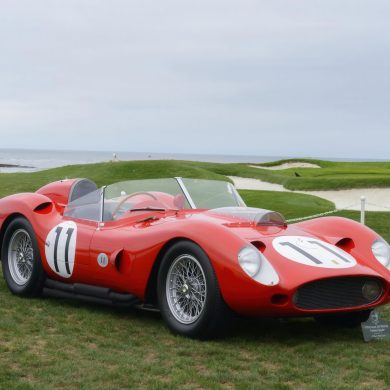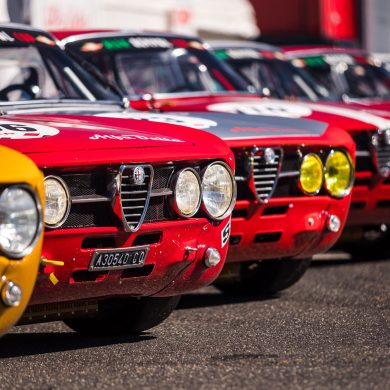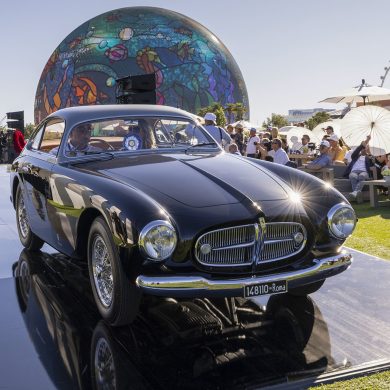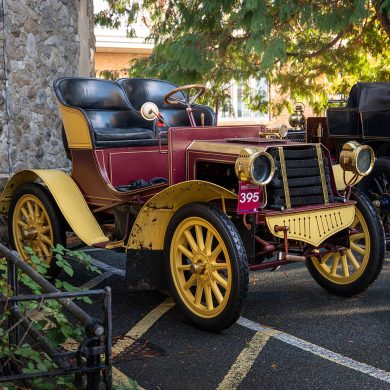One of the largest weekly automobile weekend gatherings can be found in Redmond Town Center, Redmond, Washington, where a free outdoor exotic car show is hosted every Saturday morning from 7:15 AM to 11:30 AM.
The organizers call it EXOTICS at RTC. Most people would call it “cars and coffee,” but this event is more organized, has security and volunteers who help with parking and crowd control, and not all cars are welcome.
On designated weekends, a street in the center of the shopping area is blocked off for parking cars of a specific type. Some of the cars are exotic. Others are just “unusual.” Here’s what turned up on British Car Day in 2021.
McLaren
If you live in Seattle Metro, are young, and work for Microsoft, it seems like a Ferrari, a Lamborghini, a Porsche GT3, or a McLaren is as much a part of your standard equipment as a laptop is to everyone else. There were plenty of McLarens in attendance at this event, but I didn’t spend much time covering them—for me, the more exciting cars were elsewhere (sorry, McLaren fans!).
Aston Martin
This event featured over 20 Aston Martin cars. The green one (pictured below) is a 12 cylinder Vanquish, a limited production model on a bespoke carbon fiber and alloy platform, made between 2000 and 2007. The looks of this era of analog Astons project Power, Beauty, Style – and the sound of the V12 starting makes an unmistakable statement. They might not be the fastest, but they’re fast enough.
Aston Martin has an interesting history, with hardly one year of profit in the past century. Nearly defunct in the 1980s’ (having sold a mere 6 copies one year), Aston eventually became part of the luxury group that includes Jaguar, Volvo, and Land Rover. A comeback began in 1994 with the DB7—essentially a tuned Jaguar XK in an Aston wrapper.
The 12 cylinder DB9 emerged in 2003, a grand tourer. This car was a sensation. Between the styling and the interior, it has to be one of the most beautiful cars ever made.
Introduced in 2005 in England and 2006 in America, the V8 Vantage is a true 2-seat sports car that became the best-selling car in company history. It was upgraded and offered through 2017 as a V8, and up to 2018 as a V12.
The Vantage is a luxury car, a touring car, a sports car in one package. It might have sold better had it not the reputation of being exotic and expensive.
With a $110,000 base price when introduced in America, it was expensive. Not expensive enough for Aston to sell all they could make, however. It sold out initially in 18 months, with 22,000 produced—good production numbers for a handmade car.
Components were designed to be reliable on everyday high mileage drivers, and they are. While some systems are expensive to service and replace, they are not as much as some people think.
You can find numerous high mileage examples on the roads that have not cost their owners so dearly. As a result, Astons of the era have depreciated and are an excellent buy for those seeking a used exotic or touring car.
These two cars proved that Aston Martin could design and build a car with exotic looks and performance that could be driven as far as most automobiles. They were expensive to buy but not super expensive or inconvenient to own, they won on race tracks and in beauty contests, and they saved the brand for a generation. DB would be proud.
Most of the Astons displayed at RTC on British Car Day came from the DB9/V8 Vantage era introduced in the mid-2000s.
Jaguar
The matte grey Jaguar below is a Project 8. When they introduced it, Jaguar called it the highest performance road car they had made to date. The engine was supplied by the Ford Racing division in England, a follow-on supply contract from the time Jaguar was part of the Ford Luxury Group.
That engine is the most powerful motor Jaguar ever offered in a street car—a 700 Nm, supercharged 5 liter, direct-injected, double overhead Cam V8, enabling a top speed of 200 mph and a 0-60 time of 3.3 seconds through an 8-speed paddle shifter transmission. Just the thing you need to race your neighbors to the sales at Redmond Town Center before the stores run out of merchandise.
Slower but more elegant than the Project 8, this XK140 cabriolet is a dark blue beauty dressed in whitewall tires. The successor to the XK120 which arrived in 1948, this newer Jaguar sports car stunned the auto world by achieving 120 mph when most sports cars of the era could hardly reach 100 mph.
The same long stroke, high torque, straight-six 3.4 double-overhead CAM engine in race tune provided the power for the tube frame “C” Type race car—with which Jaguar won the 24 hours of LeMans in 1951 and 1953. It is considered one of the most beautiful engines ever put in a car; it’s smooth running and sounds wonderful.
In the 1950s, it would have been hard to find such an elegant and comfortable performance car. The body lines are curvaceous and seductive. The leather interior is luxurious, the polished wood dash elegant.
The car also looks great with large diameter wire wheels. It’s Lux+, a car that would improve the appearance of any driveway. Why don’t they make cars that look like this today?
Bentley
One of the world’s best-known hood ornaments identifies this brand. There’s a 1955 version and a 1926 version.
I found a beautiful silver and green 1955 Bentley convertible at British Car Day, as well as a less-comfortable mid-1920’s 4.5 Liter cabriolet weighing 4600 lbs, according to Dee, its co-owner. That car is massive.
What is it like to drive? I have no idea. The controls are so different from those of a modern car I would need a lesson.
From riding in it, I can tell you it’s SUV-high, noisy, and slow by today’s standards—but still entertaining. It leans in turns, and the wheels look big enough to roll over everything they won’t sink in. I would not try it at the beach or a deeply muddy road unless you are prepared to get out and push.
Early model Bentley owners are a hardy breed. They’ve been known to drive these open cars in snow, sleet, tornadoes, thunderstorms, and hailstorms. They will run them through herds of wild jackalopes and schools of flying sharks.
Aurora Cars
British Car Day at the RTC included two of these beautiful 289 slabside street cars. The silver car is an ERA replica built by the owner. ERA cars have a reputation for quality and authenticity, and in this beauty, it shows.
Based in New Britain, Connecticut, ERA is one of the oldest existing Cobra replica suppliers. This car replicates the 289 AC Cobra, the first generation Cobra roadster that used the Ford 260 (later the 289). It’s thought to be a pretty street car of the English sports car persuasion with American V8 power added.
These are not as common as the 427 racing-style Cobra replicas that have been around for decades. A 289 body replica was not available until more recently, except for the red Aurora Cobra in the photo below.
The red car is an Aurora Cobra, a rare car manufactured by Aurora Cars in Canada during the 1980s in Richmond, Ontario. Aurora Cars had to conform to US EPA and DOT regulations to export them to the US and sell and register them as new cars through a network of US dealerships, including Ford dealers.
158 cars were built and sold of this model over roughly five years. Five of a slightly different follow-up model were made before Aurora Cars ended production and closed its doors.
This particular 1984 example has been driven more than 133,000 miles. Not very well known outside of the Cobra world, Aurora Cobras are better known and respected by Cobra aficionados. Full disclosure: This is the author’s car.
Aurora Cars remains, at best, a footnote in automotive history—but an important one for owners of the cars. There is even a worldwide Aurora Cobra owners website.
Tiger
Only one example of a Sunbeam Tiger came to the show, but these cars share much of the Cobra’s DNA. There used to be more Tigers than Cobras on the road. Now Cobra replicas are many times more numerous.
The car pictured here is a 289 engine model that looks sharp in silver paint and appears well maintained. Sunbeam made 7128 examples of this car, a more civilized but equally sporting version of an AC Cobra.
The Tiger is a more practical car with roll-up glass windows and a convertible top. The starting price for a 1964 model was $3,500, roughly ⅔ of the cost of an AC Cobra.
Heavier than a Cobra by hundreds of pounds, the Tiger did not make a great road race car, but owners did very well autocrossing them. One of them vexed me in my Cobra when I lived in the San Francisco Bay Area, and sometimes autocrossed with the Norcal Shelby Club and the Tiger Club in the San Francisco Giants stadium parking lot. I tried hard but couldn’t beat him since he always laid out the courses for the races (sounds like a good excuse, doesn’t it?)
Austin Healey
This pretty blue and white 100 “Big Healey” appears to have a vintage Chevy V8 installed in it by a hot-rodder. Yikes! In addition to being a pretty car with a clean body and minimal chrome, it must be a handful to drive! Only 55 100S models were made in 1955, and none with Chevy engines.
A successful race car, the “Big Healey’s” finest hour came in 1954 when Lance Macklin and George Huntoon won its class and placed 3rd overall at Sebring. In 1956, Don Healey himself drove a streamlined supercharged 100 to 203 MPH on the Bonneville Salt Flats.
100 Healeys are rare and desirable; early ones powered by a lightweight 2660 cc 4-cylinder Austin motor are the most nimble. These are highly sought-after, since the BN1 models are the earliest ones. They don’t seem to come on the market often; prices range from $30K to $70K for the best examples.
I like them better than the later 3000’s ending in the BN8. They have 6-cylinder, 2.9-liter motors and can be faster but don’t seem as purely sporting to me. Austin bowed to luxury to make them more comfortable and appealing to more people, but I prefer the BN1.
MG
I spoke briefly with this gentleman and thought he would make a good photo next to his MGA. Made after the bicycle-fender MGs of the 40s and 50’s, 100,000 MGAs were produced between 1955 and 1962. You don’t see them driven very often.
The owner restored it and says it’s a nice driver for when he wants to take something with four wheels. His other ride is a Harley. He looks like he fits in both worlds, doesn’t he?
I thought the body looked good in French Blue with black wire wheels and chrome knock-offs, so you can find them to tighten them. You don’t want your wheels to fall off and roll ahead of you on the road.
This is a simple, no-frills car with a metal dash and two bucket seats. It has a nice, streamlined shape compared to earlier TF models.
Out alone on a country road is where this car comes into its own. It epitomizes the kind of topless, wind-in-your-hair roadster motoring of those classic British sports cars that won over drivers in America (where most of them were sold).
Caterham
The Caterham Super 7 is a modernized Lotus 7, the evolution of the car that began after 1973 when the company took over production from Lotus. Caterham stayed true to the car’s roots by retaining the car’s 4-cylinder drivetrain, refining the shape, and upgrading the interior for comfort.
I’m on shaky ground using the word comfort to describe a lightweight, short-wheelbase car designed to be driven open top most of the time. Weather gear is available, but I’ve rarely seen anyone use it.
Still, this is not as rough a car as it was when Lotus made them. It has been nearly 50 years since then, and the car is still in production—a tribute to the original design. I wonder if Colin Chapman expected that?
At one time, Caterham offered the car with a Rover-Buick-based aluminum V8 that offered up to 300 hp. That must have been frightening.
It is limited now to a performance range of 4-cylinder motors. Weighing a little over 500Kg, the 4-cylinder motor provides all the power it needs for most drivers. You can buy it as a kit and build it yourself or buy a complete running car from a local dealer. Motor on, Super 7!
Lotus
Lotus continues the philosophy that made Colin Chapman so successful. “Add lightness” was his mantra in both his race cars and his street cars, like the little Elite—and one of my favorites, the Elan, which was introduced when I was at university. Ah, make that elementary school (that sounds better).
The Elise is capable of reaching 150 mph, even with the diminutive 1.8 liter, 218 hp motor in the 2011 model. It’s a well-balanced driver’s car you can go fast in without getting yourself in trouble.
At 1600 lbs in the launch year, it offered a 0-60 time of 5.9 seconds with the base engine of only 118 hp. By 2011, it could accelerate 0-60 in 4.2 seconds and had a top speed of 140 mph. Track-only models sold through 2017 accelerated to 60 in as fast as 3.8 seconds and could reach over 150 mph. They did this so well and with such a small motor that it seems like they were designed for track driving.
As performance cars became faster, Lotus stepped up. They launched a new platform in 2010—the yellow car in the photo named Evora (I don’t know who it’s named after). It looks wicked, and it is.
It’s available in a coupe and a 2+2. It’s larger than Lotus’s earlier cars and weighs over 3,000 lbs. It has enough space in the boot for a set of golf clubs, but for that, I’d rather take a Lexus sedan. The Evora’s trunk is better used for your race gear.
The fastest model makes 430 hp with a V6, can cover 0-60 in 3.7 seconds, and can reach 196mph. See? It’s better suited for race tracks than golf courses.
The Evora has a unique shape, a low center of gravity, and a very low drag coefficient of .337. The motor is sourced from Toyota, and that’s a good thing. The interior is leather and carpet. Everything about this car is plain and simple; if it doesn’t have a purpose, it isn’t in there.
Mini & Riley
Riley is a badge not often seen in the US. The company started making cycles in 1890. It also made street cars until 1969, and sports and race cars in the 1930s.
Unmistakably British, there has been no attempt to resurrect the cars or the company. A handful of Riley replicas have been made.
The ubiquitous Mini, by contrast, seems like it will go on forever. It may eventually be seen in the post-apocalyptic world, driven slowly and erratically by a zombie.
The Mini is Britain’s economical, simple, durable, practical, universal car for everyone, It went on sale in 1959, and they are still making them in several configurations. You can see them with aftermarket parts, DIY accessories, and decorations.
The Mini is not a car—it’s a culture. It was a giant killer in international racing, having won the Monte Carlo Rally three times from 1964 to 1967.
The little 4-cylinder BMC motor can’t make 100 hp, yet it’s often the loudest motor at the vintage race. It’s so light and sticks so well on the turns you can see it screaming around the track chasing or chased by cars with twice the motor.
The current model is also beloved. It offers the same attributes as the original in a larger, more comfortable package, but the car is true to its design purpose: to be a multi-purpose platform that can work in some way for everybody.
The gold vintage example here with the flares, the fancy wheels and sticky tires, the two-tone paint, the right-hand drive, and the restored interior is as appealing as it was in 1959 and then some.
Long live the Mini.
Morgan Three-wheeler
Among the quirkiest auto companies, even for the British, the Morgan Automobile Company was established in 1909 and is still producing cars today. The most unique thing about a Morgan is that the frame is made of ash. How many cars have you owned with a wooden frame?
Curious as it is, the wooden frame has worked for Morgan owners for decades. The wood is dipped in a preservative to protect it from the elements. I don’t know if Morgan wood frames rot slower than steel rusts, but both seem to last long enough.
As a structural component, the use of a softwood frame provides effective vibration dampening. Morgan may be the only automobile company with an in-house woodshop. If I bought a Morgan, I’d consider asking them to build a matching garage for it.
The three-wheeler in the photo is a replica of a car Morgan made in the 1930s. I don’t know a lot about it except that it has only three wheels, the engine is exposed and hung on the front of the car, it’s a roadster, you have to wear a helmet to legally drive it in the state of Washington, and you have to be careful to avoid being crushed like a bug by a distracted driver in an SUV who doesn’t see you and might not even know you’ve been run over. I could tell you what it’s like to ride in it, but I’m not getting into one those things.
Most Morgan three-wheelers I’ve seen were participating in vintage racing events. They had J.A.P. engines giving about 35 hp. I’ve never seen one on the road.
Some Morgans were made with larger, more powerful S&S engines. Even though they weigh little more than 1,000 lbs, the ones with J.A.P. engines were not what you would call fast. The one in the photo looks like an S&S, which makes 80 hp and can drive the thing to 115 mph.
Morgan three-wheeler replicas have sold well enough to convince the Morgan company to offer one of their own. The company website says they have a new one in development. We might see some fearless owners drive (ride?) them on public roads soon.
Triumph
In the 50’s and 60s, Triumphs were popular sports cars. They make good vintage racers and fun street cars, but they need a tinkerer to keep them running.
Triumph cars offered good performance, but when they arrived in America, they were eclipsed by Japanese cars, which were more reliable. The two examples here are a green TR4 and a red TR6—both roadsters, the most common configuration. Triumph made 40,000 TR4’s in their five-year production run.
Powered by a 2.1 liter straight-four engine, the TR4 could produce 200 hp—enough for a 2,100lb car, but no rocket. Fast enough, however, considering the motor was originally designed for a tractor. They had considerable success in road racing and are a good choice for an inexpensive vintage car.
Triumph also made 91,000 TR6s, 90% of which were exported. The 2.5 liter inline 6 made 150 hp, giving the car an 8.2 second 0-60 time and a top speed of 120 mph—good performance in the age of the muscle car in America.
Delorean
Yes, it’s a British car (sort of). They were made in Ireland.
Deloreans had stainless steel unpainted bodies, gullwing entries and exits, comfortable futuristic interiors, and advanced styling; poor performance sunk them. They look fast, but they are powered by an anemic Volvo 6-cylinder motor strangled by 1980s anti-smog regulations that produced only 130 Bhp.
Deloreans are about as fast as a shoplifter pushing a shopping cart full of stolen CDs. 0-62 takes a reported 10 seconds. That’s slow even for the 1980s—it’s more like 1950s performance.
The car was a bit of a laughing stock. BAE Systems offered a turbocharging kit claiming to boost power to a more respectable 195 Bhp, but the Corvette motor of the same year made 245.
I don’t know how it cornered. I don’t remember reading anything about it. It looks like it could corner well, but it’s possible the car isn’t fast enough to find out.
Deloreans have found a loyal following of owners who seem to love and care for them. Who would have expected to see six of them parked in a row at an angle?
Regardless, the styling was enough to land the car a movie role as least as important as the two main human characters in Back To The Future. I never had any respect for this car back in the day, but now in hindsight, when I look at other cars made over the years, it could have been a contender—that is, if it had the power to perform.
Ariel Atom
The Ariel Atom is a 4-wheel terrestrial rocket. Its naked frame multiplies the sensation of speed. Owners tell me they don’t feel unsafe in it, but I’d like a little more bodywork, please.
At 1,400 lbs and packing a supercharged Honda engine, this car is built for speed, not comfort. With radical styling and engineering, this is a driving experience based on performance, and it delivers. You will not go unnoticed on a drive. Truly a car for the few and the brave.
The Wrap
That’s just about everything I saw at British Car Day at RTC—a Bentley from the 1920s, an Ariel Atom, and just about everything in between.
There was something for just about everybody at this event. Check out more of the best British cars at the Concours of Elegance, or browse through these British car archives.


